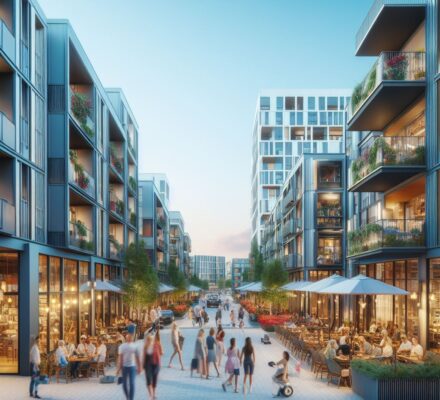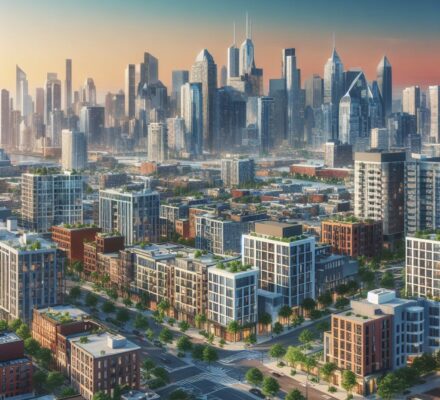Are you considering investing in multifamily apartment locations?
With the rental market on the rise, it’s crucial to make informed decisions. Did you know that 90% of renters start their search online?
In this guide, we’ll provide you with a comprehensive analysis of the factors you should consider when evaluating potential investment locations.
From economic indicators to neighborhood amenities, we’ll help you make data-driven choices that maximize your rental potential and ensure a successful investment.
Key Takeaways
- Analyzing the local job market and employment rates is crucial in determining the potential demand for rental properties in a multifamily apartment investment location.
- Assessing the presence of major industries and businesses, as well as considering the cost of living, can provide insights into the stability and growth potential of the rental market in a specific area.
- Evaluating the accessibility and quality of transportation infrastructure is important for attracting tenants and ensuring convenient access to amenities and commuting options.
- Considering neighborhood amenities and services, such as retail options, parks, and schools, can enhance the quality of life for tenants and increase the desirability of a multifamily apartment investment location.
Economic Factors to Consider
When evaluating multifamily apartment investment locations, consider the economic factors that can significantly impact your financial returns. It’s crucial to analyze the economic conditions of a potential investment location to ensure its viability and profitability. Start by examining the local job market and employment rates. A strong job market with low unemployment rates indicates a stable and growing economy, which can attract tenants and lead to higher rental demand. Additionally, research the presence of major industries and businesses in the area. A diverse and thriving business sector can provide a steady flow of potential renters and contribute to the overall economic stability of the location.
Another essential factor to consider is the cost of living. Higher living costs can affect the affordability of rental units, potentially limiting your tenant pool and affecting your rental income. Look into factors such as housing prices, utilities, taxes, and transportation costs to assess the overall cost of living in the area.
Moreover, examine the economic growth and development plans for the region. Investments in infrastructure, public amenities, and urban renewal projects can indicate a positive economic outlook, attracting more residents and potentially increasing property values.
In conclusion, conducting a thorough economic analysis is crucial when evaluating multifamily apartment investment locations. By considering factors such as the local job market, presence of major industries, cost of living, and economic growth potential, you can make informed decisions that maximize your financial returns.
Now, let’s move on to the next section, where we’ll discuss demographic analysis and trends.
Demographic Analysis and Trends
To evaluate multifamily apartment investment locations, consider the demographic analysis and trends in the area. Understanding the demographic makeup of a neighborhood can provide valuable insights into the potential demand for rental properties and the overall stability of the market. Here are some key factors to consider:
- Population growth: Analyze the past and projected population growth rates in the area. A growing population indicates a higher demand for housing and can be a positive sign for property investors.
- Age distribution: Examine the age distribution of the population. Areas with a high concentration of young professionals or retirees may present different rental market opportunities. Understanding the target demographic can help you tailor your investment strategy accordingly.
- Income levels: Assess the average income levels in the area. Higher income levels often correlate with higher rental budgets and can indicate a more stable tenant base.
Analyzing demographic trends and factors can help you identify promising multifamily apartment investment locations. By understanding the population growth, age distribution, and income levels, you can make informed decisions and increase the likelihood of a successful investment.
Remember to consider these factors in conjunction with other economic and market indicators to develop a comprehensive investment strategy.
Accessibility and Transportation Infrastructure
Consider the proximity and quality of transportation infrastructure within the area for easy access to amenities and commuting options.
When evaluating a multifamily apartment investment location, it’s crucial to assess the accessibility and transportation infrastructure of the area. A well-connected and efficient transportation system can greatly enhance the desirability and convenience of a neighborhood for tenants.
Start by examining the proximity of the property to major highways, public transportation stations, and airports. Access to major roadways and highways can facilitate easy commuting for residents, while nearby public transportation options, such as bus or train stations, can provide convenient travel alternatives for those without a car. Additionally, proximity to airports can be a significant advantage in attracting tenants who frequently travel for business or pleasure.
In addition to proximity, it’s important to assess the quality and reliability of the transportation infrastructure. Consider factors such as the frequency and reliability of public transportation services, the availability of parking spaces, and the condition of roads and bridges. A well-maintained and efficient transportation system can contribute to tenant satisfaction and retention.
By evaluating the accessibility and transportation infrastructure of a potential investment location, you can ensure that your multifamily apartment property is conveniently located and easily accessible to essential amenities and commuting options. This won’t only attract tenants but also contribute to long-term success and profitability.
Next, let’s explore the importance of neighborhood amenities and services.
Neighborhood Amenities and Services
Assessing the accessibility and transportation infrastructure of a multifamily apartment investment location sets the foundation for evaluating the neighborhood amenities and services available to potential tenants. Once you have determined that the transportation options are convenient and reliable, it’s important to consider the amenities and services that will enhance the quality of life for your tenants.
Here are some key factors to consider:
- Retail and dining options: Look for neighborhoods that offer a variety of shopping and dining options within close proximity to the apartment building. This will make it convenient for your tenants to access essential goods and services.
- Recreational facilities: A neighborhood with parks, fitness centers, and recreational facilities will attract tenants who value an active lifestyle. Having these amenities nearby won’t only enhance the living experience but also increase the property’s desirability.
- Educational institutions: Proximity to quality schools and universities is a major draw for families. Whether it’s preschools, primary schools, or universities, having educational institutions nearby adds value to your investment and appeals to a wider range of potential tenants.
Market Demand and Rental Potential
Evaluate the market demand and rental potential of the multifamily apartment investment location by analyzing current trends and assessing the profitability of similar properties in the area.
To accurately gauge the market demand, you need to examine the current trends in the rental market. Look for indicators such as vacancy rates, rental rates, and the number of new construction projects in the area. A low vacancy rate and increasing rental rates suggest a high demand for rental properties, which can translate into higher rental potential for your investment.
In addition to current trends, it’s crucial to assess the profitability of similar properties in the area. Look at the rental income generated by these properties and compare them to their purchase prices. This will give you a sense of the potential return on investment for your multifamily apartment investment.
Furthermore, consider the demographics of the area. Evaluate factors such as population growth, job opportunities, and income levels to determine the target market for your rental property. A growing population and strong job market indicate a higher demand for rental properties, increasing the rental potential.
Lastly, consider any unique features or amenities that can attract potential tenants. Features such as in-unit laundry, parking spaces, fitness centers, or proximity to public transportation can increase the desirability and rental potential of your investment.
Frequently Asked Questions
What Are the Specific Tax Incentives or Benefits Available for Multifamily Apartment Investments in This Location?
You’re wondering about the tax incentives or benefits for multifamily apartment investments in this location. There are specific incentives available, such as tax credits or deductions, that can help boost your investment returns.
Are There Any Upcoming Development Projects or Plans in the Surrounding Area That Could Impact the Value and Desirability of the Multifamily Apartment Investment?
Are there any upcoming development projects or plans in the surrounding area? These could impact the value and desirability of your multifamily apartment investment. Stay informed about potential changes that may affect your investment.
What Is the Crime Rate in the Neighborhood and How Does It Compare to Other Areas in the City?
The crime rate in the neighborhood is a crucial factor to consider when evaluating multifamily apartment investments. You need to assess how it compares to other areas in the city to ensure the safety and desirability of the investment.
How Is the Local Job Market and Employment Growth in the Area?
The local job market and employment growth in the area are crucial factors to consider when evaluating multifamily apartment investment locations. You need to examine the job opportunities and trends to make an informed decision.
Are There Any Zoning Restrictions or Regulations That Could Affect the Ability to Expand or Renovate the Multifamily Apartment Property in the Future?
Are there any zoning restrictions? Check if the area imposes regulations on expanding or renovating the multifamily property. These restrictions could impact your ability to make changes in the future.




